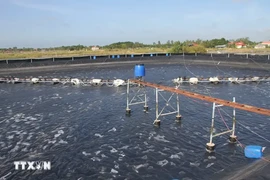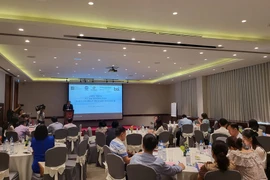Hanoi (VNS/VNA) - The Ministry of Transport (MoT) recently issued a decision outlining plans to reduce greenhouse gas emissions in the transport sector through 2030.
The plan aims to implement measures to reduce greenhouse gas (GHG) emissions, contributing to Vietnam’s 'Unconditional Contribution' target in its Nationally Determined Contributions – commitments made by countries to reduce emissions under the Paris Agreement – by 2030.
This includes a 5.9% reduction in GHG emissions compared to the business-as-usual (BAU) scenario, corresponding to a reduction of 45.62 million tonnes of CO2 equivalent.
Specifically, by 2025, the target is to reduce emissions by 3.4 million tonnes of CO2 equivalent, and by 10.61 million tonnes of CO2 equivalent by 2030.
According to statistics from the Ministry of Transport, from 2014 to 2021, the five transport sectors of road, rail, inland waterway, aviation and maritime emitted over 44.2 million tonnes of CO2 equivalent.
Based on input data, estimated GHG emissions under the BAU scenario for the transport sector are projected to increase by an average of 6-7% per year, reaching nearly 90 million tonnes of CO2 equivalent by 2030.
To achieve these targets, the MoT has developed several GHG emissions reduction solutions across transport sector under the 'Unconditional Contribution'.
These include limiting fuel consumption for newly manufactured, assembled and imported motor vehicles according to a roadmap up to 2030, ensuring that 100% of motorcycles achieve a fuel consumption rate of 2.3 litres per 100km. All newly manufactured, assembled and imported cars are also expected to meet the following fuel consumption standards: cars with engine capacities under 1,400cc achieving 4.7 litres per 100 km, cars with engine capacities between 1,400 and 2,000cc achieving 5.3 litres per 100km, and cars with engine capacities above 2,000cc achieving 6.4 litres per 100km.
The transport sector also aims to shift passenger transport from private vehicles to public transport, with a roadmap to improving service quality and developing public transport systems in centrally-run cities and first-tier urban areas.
The sector aims to ensure that public transport in Hanoi serves 45-50% of passenger transport needs, in Ho Chi Minh City 25%, in Da Nang 25-35%, and in Can Tho 20%.
By 2030, Hanoi and Da Nang will operate one Bus Rapid Transit (BRT) route each, while HCM City will operate two BRT routes.
As for urban rail, aside from the Cat Linh-Ha Dong urban railway line in Hanoi, the elevated section of Line No. 3 (Nhon – Hanoi Station) is expected to be operational later this year, with the remainder of Line No. 3 completed and operational by 2030.
In HCM City, Metro Line No. 1 (Ben Thanh – Suoi Tien) will begin operations later this year.
The ministry will also shift freight transport from road to rail, with implementation planned from 2024 to 2030 so the sector will upgrade and effectively exploit existing railway lines, ensuring seamless connections on international rail transit routes, prioritising high-speed North-South rail lines, and connecting key international seaports, airports and railway hubs in major cities.
A new rail line from HCM City to Can Tho City is also under consideration.
By 2030, the goal is to transport 11.8 million tonnes of freight by rail, representing a market share of approximately 0.27%, with freight turnover of 7.35 billion tonnes, representing approximately 1.38% market share.
Furthermore, the ministry is looking to shift freight transport from roads to inland waterways and coastal shipping routes, targeting a freight volume of around 715 million tonnes and freight turnover of about 150 billion tonnes by 2030. This includes using compressed natural gas buses in Hanoi and HCM City, increasing the load factor for trucks, encouraging the use of biofuels, and promoting electric motorcycles, cars and buses.
The ministry has assigned specific implementation responsibilities to various departments and specialised units to carry out these solutions based on research and proposals to mobilise resources from the State budget, capital sources from society and other legitimate sources, to be submitted to the ministry for approval for the 2024-30 period./.
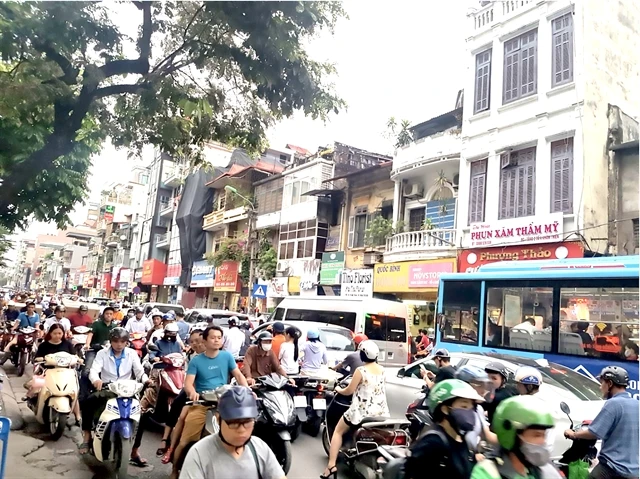
See more
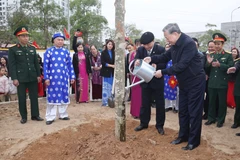
Party chief attends tree planting festival in Hung Yen province
Since 2022, Hung Yen has planted a total of 126,633 trees, surpassing the target by 173.5%, with 38,404 trees planted in 2024 alone, 60% higher than the target.
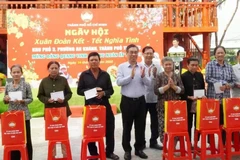
HCM City presents Tet gifts worth 110 billion VND to poor, policy beneficiaries
Nearly 200,000 gift packages worth about 110 billion VND (4.36 million USD) were provided for disadvantaged people and policy beneficiary families in Ho Chi Minh City on the occasion of the Lunar New Year (Tet).

Job market to surge in 2025, technology and sustainability leading the way
TopCV predicts that roles such as software developers, data analysts and cybersecurity engineers will dominate the labour market in the technology sector, while manufacturing and logistics industries are expected to prioritise recruitment of automation engineers, supply chain managers and quality control specialists to optimise processes and integrate new technologies.
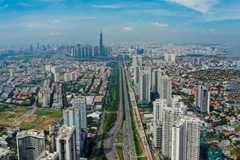
HCM city’s urban area master plan approved
Thu Duc city will be an area leading the HCM City’s economy and other metropolitan areas through knowledge-based economic activities such as training, research, high-tech production and development cooperation.
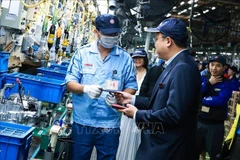
Over 95% of labourers in Hanoi return to work after Tet
As many as 356 out of 365 enterprises with 147,872 labourers working in industrial and export processing zones in the capital city have resumed operations.

PM orders civilised, safe, economical practices in festive activities
The PM directed relevant ministries and sectors to strictly enforce directives and regulations on security, safety, maintain a joyful yet orderly atmosphere in festive activities, and ensure compliance with laws on festival management and organisation.
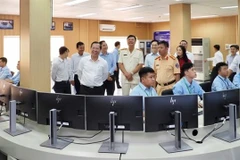
HCM City to establish transportation data centre
Chairman of the Ho Chi Minh City People's Committee Phan Van Mai has asked the city Urban Traffic Management Centre (UTMC) to establish a transportation data centre by 2026 with a deadline of 2027.
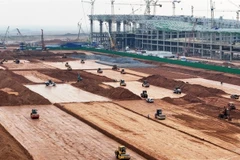
Labour gaps expected after Tet, Ministry warns
The Ministry urged labour agencies to strengthen monitoring of supply-demand trends and expand online job-matching platforms across provinces to fill the forecast labour gaps in the first quarter.
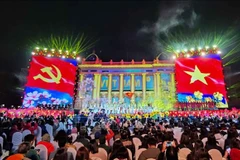
NA Chairman attends art performance marking 95th anniversary of CPV
The performance is a chance to honour the Party and remember President Ho Chi Minh, and generations of Party leaders and fallen heroes who dedicated their lives to national independence and the well-being of the people.
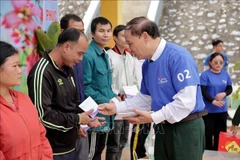
Tet 2025: Communities come together to spread joy, support
According to local Departments of Labour, Invalids and Social Affairs, over 13.5 million people nationwide benefited from this outpouring of support. The total budget for this endeavour exceeded 7.943 trillion VND, up 181 billion VND from the previous year.
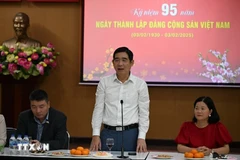
CPV’s 95th anniversary celebrated in Thailand
Vietnamese Ambassador to Thailand Pham Viet Hung described the CPV founding as a turning point in Vietnam’s revolutionary path - a moment that marked the growth of the Vietnamese working class and their readiness to lead the nation toward independence and progress.
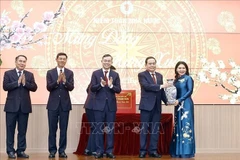
NA Chairman outlines State Audit Office’s key tasks for 2025
NA Chairman Tran Thanh Man encouraged the State Audit Office of Vietnam (SAV) to leverage its extensive operational experience to identify gaps in policies and laws. By doing so, it can proactively propose timely amendments and improvements
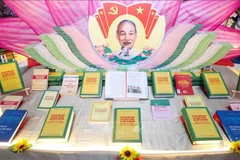
Party chief’s new book spotlights Vietnam’s public security officers
The 766-page book, presented in a 24cm x 16cm format, features a foreword by the People's Public Security Publishing House and 80 carefully selected articles, speeches and interviews drawn from over 500 writings by Party General Secretary To Lam.
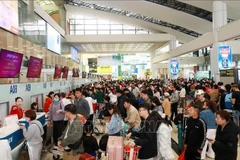
Domestic airports serve 3.6 million passengers during Tet holiday
During the Tet holiday, Tan Son Nhat International Airport served approximately 1.38 million passengers while Noi Bai International Airport processed around 900,000 passengers, and Da Nang International Airport handled over 381,000 passengers.
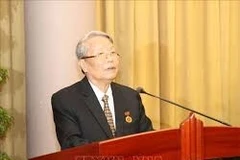
Former State President honoured with 65-year party membership badge
On behalf of the Party and State leaders, State President Luong Cuong presented the badge to former President Tran Duc Luong, recognising his remarkable contributions to the Party and the nation’s revolutionary cause.
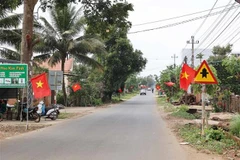
Flag road model inspires national pride
In recent years, the National Flag Road model has been widely developed across many localities in the Central Highlands province of Dak Lak, serving as a testament to the spirit of great national unity and making a practical contribution to the movements of building new-style rural areas and civilised urban areas.

Vietnamese community in France celebrates Tet
For over a decade, the Vietnamese community in France has maintained the tradition of gathering at the Lunar New Year (Tet) Market in Nogent-sur-Marne, a suburb of Paris.
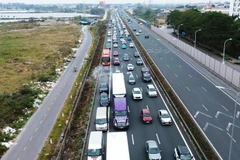
Traffic accidents drop by over 36% during Tet holiday
A total of 445 traffic accidents were reported nationwide during the nine-day Tet (Lunar New Year) holiday from January 25 to February 2, resulting in 209 fatalities and 373 injuries.

Vietnamese Tet celebration held in Japan's Higashi-Hiroshima city
A Lunar New Year (Tet) celebration was held in Higashi-Hiroshima city in Japan’s Hiroshima prefecture on February 2 or the fifth day of the Lunar New Year.

Tet celebration helps OVs in Australia uphold traditional culture
New Sunlight for Children wishes to connect with many other organisations to help uphold and popularise the Vietnamese culture and maintain annual activities, including fundraising events, to assist disadvantaged children in the homeland.
